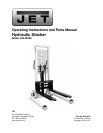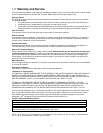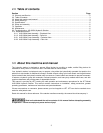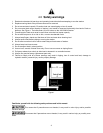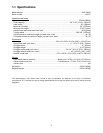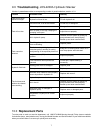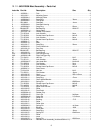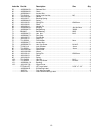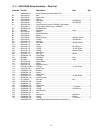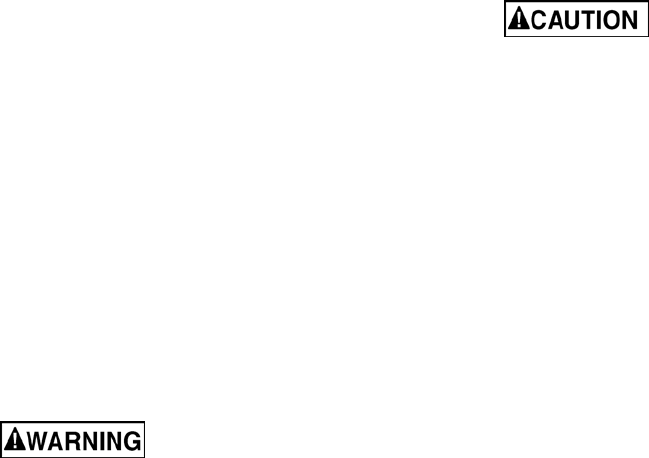
6
6.0 Setup and assembly
Number in parentheses refers to corresponding
number in parts breakdown.
1. Remove all packing material from stacker.
2. To assemble forks, remove one of the snap
rings (#5). Tap fork shaft out (#6). Forks to be
assembled must come from the same crate as
the mast.
3. Align holes in forks (#1) with holes in carriage
(#4) and tap fork shaft through carriage and
fork holes.
4. Reinstall snap ring (#5) to hold fork shaft in
place.
5. Be sure assembled forks are even and
parallel. Use adjusting screws (#3) if correction
is needed.
6. To assemble outrigger legs, make sure legs to
be assembled come from the same crate as
the mast.
7. Insert outrigger legs (#24A and #24B) into tube
openings in bottom of mast (#18). Align holes
in legs with holes in mast to enable legs to be
equal distance from mast. Legs should slide
into tube openings easily without force.
NOTE: Make sure the proper leg is inserted on
the correct side. (The beveled edge near the
wheel will face upward.) If the mast does not
stand vertical after assembling the legs, flip the
legs over and switch sides.
8. Fasten legs with four screws, four lock
washers four flat washers, and four hex nuts
(#25-27, and 33). Tighten hex nuts firmly.
9. IMPORTANT: The hydraulic cylinder comes
with a shipping plug installed (#106). Before
operating the stacker, remove this shipping
plug and install breather plug (included in
packaging provided with stacker) in its place.
Do not exceed rated load and
load center capacities. Excessive load can
cause tipping or loss of control. Use on
finished, smooth and level floors only; do not
use on slopes.
7.0 Operation
1. Insert both forks evenly and completely under
load. Load must be distributed equally on both
forks and centered toward the mast. Do not
allow more than half the load to extend beyond
load center. Do not lift load with fork tips only
and do not lift unstable or loose load.
2. Press the foot pedal or push the pump handle
downwards (handle lever must be in lower
position) to raise the forks by one stroke.
Continue to pump the pedal, or handle, until
desired height is reached. Do not exceed
maximum lifting height.
3. To lower forks, pull the pump release lever on
handle slowly to allow the load to lower in a
cautious and controlled manner.
4. To move stacker with load, lower forks
carefully. Use both hands with a firm grip to
push and steer the stacker on level, smooth
finished floors only. Keep all people clear from
stacker while lifting, lowering and moving load.
When not in use, do not allow
heavy loads to remain on the forks for an
extended period of time. Always lower forks
when not in use.
8.0 Maintenance
For optimum performance, the drive chain (#37)
should be lubricated with chain oil regularly.
Always store the hydraulic stacker without load,
and forks in lowest position.
Periodically check oil level in cylinder. Replenish as
needed with hydraulic jack oil through the oil plug
(#106)
Keep pivot points and metal-to-metal contact points
lubricated.



